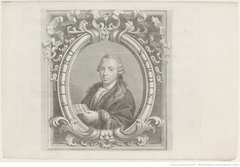Pietro Nardini Thematic Catalog
Monday, August 28, 2017

New on our bookshelves is a thematic catalog for Pietro Nardini:
Federico Marri and Marie Rouquié, Pietro Nardini (1722-1793) da Livorno all’Europa: Catalogo tematico delle opere (Treviso: Diastema 2017). 764 p., ISBN 978-88-96988-46-6.
Composer and violinist Pietro Nardini (12 April 1722, Livorno – 7 May 1793, Florence) was the most important pupil of Giuseppe Tartini in Padua. There, he received a thorough education from 1734 to 1740 that trained him for his long-lasting career as a teacher and performer, which took him to Vienna, Dresden, Braunschweig, and the Stuttgart Court. In 1768, he came into close contact with the court in Tuscany and one year later he was named music director of the chapel of Pietro Leopoldo (later Emperor Leopold II). Nardini was one of the most esteemed figures in musical life at the court and was member of the Arcadia under the name of Terpandro Lacedemone.
Charles Burney wrote the following about Nardini in The Present State of Music in France and Italy (London, 1771):
“Monday, Sept. 10 [1770]. This afternoon, I had the pleasure of hearing Signor Nardini…at a great concert, at the house of Mr. Hempson, and English gentleman, where there was much company… Signor Nardini played both a solo and a concerto, of his own composition, in such a manner as to leave nothing to wish: his tone is even and sweet; not very loud, but clear and certain; he has a great deal of expression in his slow movements, which it is said, he has happily caught from his master Tartini. As to execution, he will satisfy and please more than surprize [sic]: in short, he seems the completest player on the violin in all Italy; and, according to my feelings and judgment, his stile is delicate, judicious, and highly finished” (p. 248-250).
The new thematic catalog presents a thorough treatment of the life and works of Pietro Nardini and offers a comprehensive overview. An introductory essay by Rouquié about the significance of Nardini’s works for modern performers is followed by a detailed biography of the composer. Further chapters are dedicated to Nardini’s students, the dating and transmission of the works, autograph letters, and portraits of Nardini. An extensive bibliography, list of library sigla, index of titles, and index of names round off the publication.
The main part of the book is of course the thematic catalog. The catalog (cited in RISM as MarN) supersedes an older study by Clara Pfäfflin (Pietro Nardini, seine Werke und sein Leben, Stuttgart 1935, cited in RISM as PfäN).
The works are organized by instrumentation. Roman numerals are followed by a lowercase letter. For example, I is for compositions for violin and d is for two violins and bass, then the works are arranged by key. Id, Re3 is thus a minuet in D, no. 3 for two violins and bass. Works for one violin and bass make up the largest portion of Nardini’s oeuvre (group Ib, p. 246-366). More specific headings would have been helpful here to locate individual works, rather than “Catalogo tematico – Opere per violino” appearing on all the pages in this section.
Comprehensive information is provided for each work. The descriptions for imprints and collections are also very detailed. Marri meticulously tracked down and listed each edition of every work that appeared up to the publication of the catalog.
The RISM online catalog has 280 listings for Pietro Nardini. Included here are two questionable attributions: one for Pietro Nazari and one for Pietro Antonio Locatelli. RISM’s entries for Nardini have been edited and references to this new thematic catalog have been added.
We would like to thank the authors and the publisher for kindly providing us with an examination copy of the catalog.
Image: Portrait of Pietro Nardini (ca. 1782), from Gallica.
Share Tweet EmailCatégorie: Nouveautés

